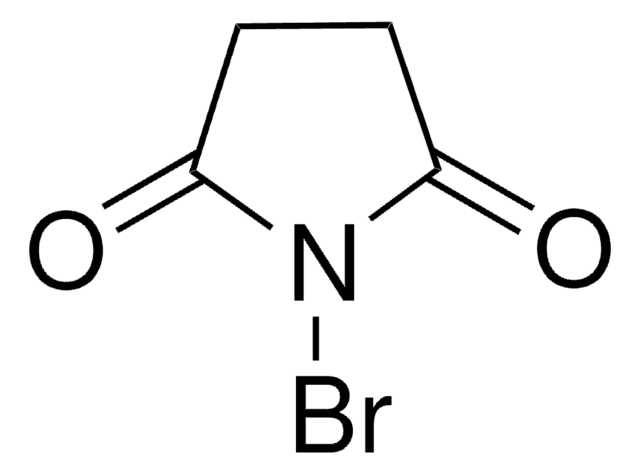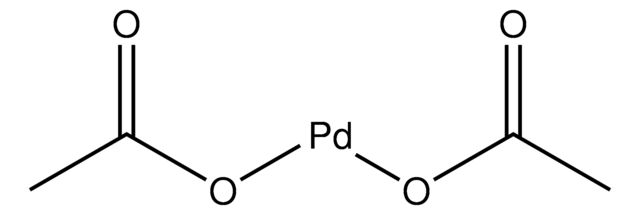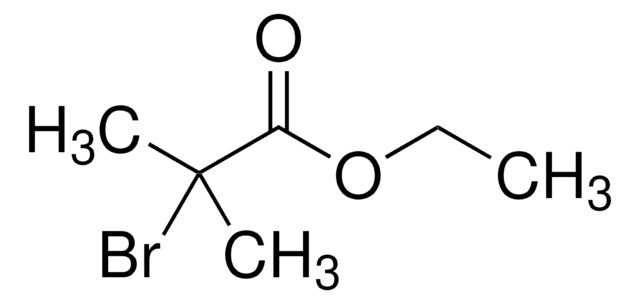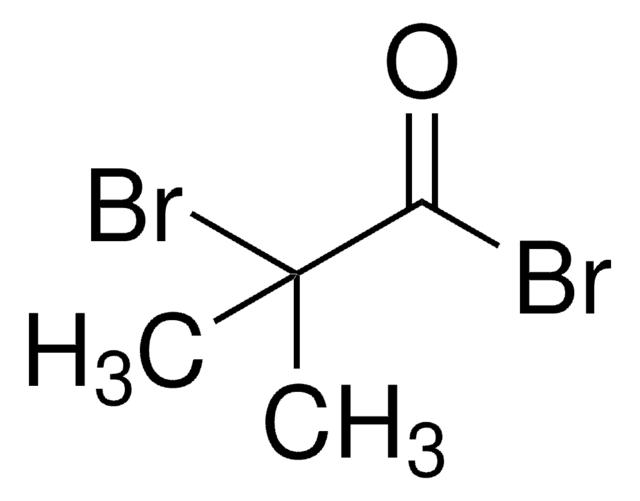254185
Copper(I) bromide
99.999% trace metals basis
Synonym(s):
Cuprous bromide
About This Item
Recommended Products
Quality Level
Assay
99.999% trace metals basis
form
powder
reaction suitability
reagent type: catalyst
core: copper
impurities
≤15.0 ppm Trace Metal Analysis
mp
504 °C (lit.)
density
4.71 g/mL at 25 °C (lit.)
application(s)
battery manufacturing
SMILES string
[Cu]Br
InChI
1S/BrH.Cu/h1H;/q;+1/p-1
InChI key
NKNDPYCGAZPOFS-UHFFFAOYSA-M
Looking for similar products? Visit Product Comparison Guide
General description
Application
- As a solution-processable hole transport layer (HTL) for organic solar cells (OSCs). CuBr enhances the power conversion efficiency of solar cells.
- As a precursor to synthesize photoluminescent metal organic frameworks(MOFs).
- To synthesize highly emissive three-coordinate copper(I) complexes as a dopant in OLEDs with maximum external quantum efficiency of 21.3%.
- As a catalyst with ligands for atom transfer radical polymerization (ATRP) reaction of tertiary alkyl halides in 14 different solvents to determine the rate constant.
- To synthesize macrocyclic polymer via intramolecular radical trap-assisted atom transfer radical coupling.
Signal Word
Danger
Hazard Statements
Precautionary Statements
Hazard Classifications
Acute Tox. 4 Dermal - Acute Tox. 4 Oral - Aquatic Acute 1 - Aquatic Chronic 1 - Eye Dam. 1 - Skin Irrit. 2
Storage Class Code
11 - Combustible Solids
WGK
WGK 3
Flash Point(F)
Not applicable
Flash Point(C)
Not applicable
Personal Protective Equipment
Choose from one of the most recent versions:
Already Own This Product?
Find documentation for the products that you have recently purchased in the Document Library.
Customers Also Viewed
Articles
We carry a large variety of electrophiles and nucleophiles that are widely used in C–C bond-forming reactions. This group of products contains many organometallic reagents as well as commonly-used alkylating and acylating reagents.
We presents an article about a micro review of reversible addition/fragmentation chain transfer (RAFT) polymerization. RAFT (Reversible Addition/Fragmentation Chain Transfer) polymerization is a reversible deactivation radical polymerization (RDRP) and one of the more versatile methods for providing living characteristics to radical polymerization.
Tools for Performing ATRP
We presents an article about Copper(I)-mediated Living Radical Polymerization in the Presence of Pyridylmethanimine Ligands, and the emergence of living radical polymerization mediated by transition metal catalysts in 1995, which was a seminal piece of work in the field of synthetic polymer chemistry.
Protocols
Sigma-Aldrich presents an article about RAFT, or Reversible Addition/Fragmentation Chain Transfer, which is a form of living radical polymerization.
We presents an article featuring procedures that describe polymerization of methyl methacrylate and vinyl acetate homopolymers and a block copolymer as performed by researchers at CSIRO.
Sigma-Aldrich presents an article about the typical procedures for polymerizing via ATRP, which demonstrates that in the following two procedures describe two ATRP polymerization reactions as performed by Prof. Dave Hadddleton′s research group at the University of Warwick.
Our team of scientists has experience in all areas of research including Life Science, Material Science, Chemical Synthesis, Chromatography, Analytical and many others.
Contact Technical Service










![Tris[2-(dimethylamino)ethyl]amine 97%](/deepweb/assets/sigmaaldrich/product/structures/695/792/ee0ff167-22a3-43a7-83a1-6c4908adf0ae/640/ee0ff167-22a3-43a7-83a1-6c4908adf0ae.png)

![Tris[(1-benzyl-1H-1,2,3-triazol-4-yl)methyl]amine 97%](/deepweb/assets/sigmaaldrich/product/structures/179/695/86a721c8-2a4c-4e4f-bc36-6276ce7a941f/640/86a721c8-2a4c-4e4f-bc36-6276ce7a941f.png)
